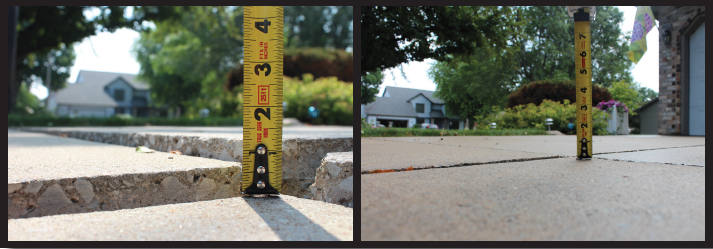The stability of a concrete slab is directly proportional to the quality of the base on which it is poured.

Poor base conditions can be attributed to:
Poor or improper compaction of the base: Failure to properly compact base materials before pouring can lead to hastened settling. The weight of the slab will further compact the base after curing, and settlement can happen quickly.
Climate: The freeze and thaw cycle experienced in many regions causes the ground underneath the slab to expand when frost is present. This in turn will cause slabs to heave or raise. When the frost melts the slabs will settle and most often not to their original elevation. Slabs may become uneven resulting in trip spots. Drought often causes soil, such as expansive clays to shrink causing settling issues for concrete slabs. When expansive clay soils encounter wet conditions, they may swell leading to shifting concrete that needs leveling.
Erosion: Many different factors can lead to eroded base materials under concrete. Damaged water lines or sewer lines can lead to washout of base materials causing slabs to settle. Improperly placed downspouts can cause pooling of water, which can lead to erosion.
Machine/Traffic Vibrations: Concrete slabs may move or settle in industrial/highway settings where movement and heavy loads are present. The vibrations from the machinery and passing traffic can lead to the base compacting and the slabs settling or slab movement.
Slab Curl/Rocking Slabs: Slab curl occurs when a relatively large section of concrete is poured. During the curing process, the top of the slab may cure slightly faster. This leads to slabs that curl and may rock and become unstable. Vibration may also cause slabs to eventually settle.